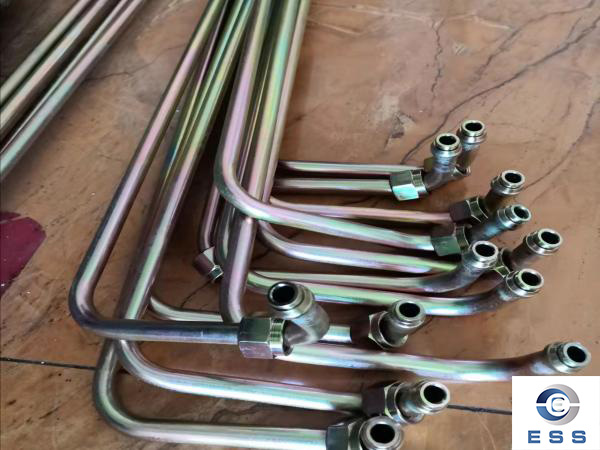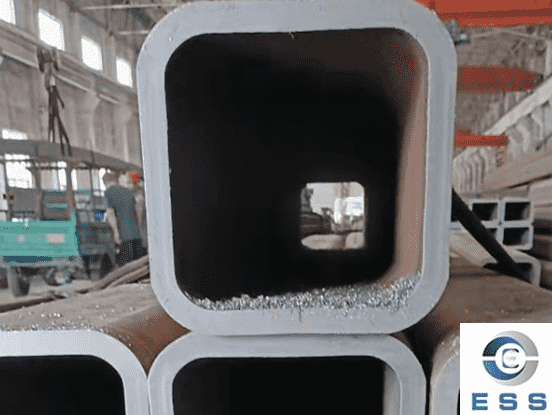Quality requirements of seamless hydraulic tubes

chemical composition of steel;
The chemical composition of steel is the most important factor affecting the performance of seamless hydraulic pipes. It is also the main basis for formulating pipe rolling process parameters and steel pipe heat treatment process parameters. In the
seamless steel pipe standard, according to the different uses of the steel pipe, corresponding requirements are put forward for the smelting of steel and the manufacturing method of pipe blanks, and strict regulations are made on the chemical composition. In particular, requirements are put forward for the content of certain harmful chemical elements (arsenic, tin, antimony, lead, bismuth) and gases (nitrogen, hydrogen, oxygen, etc.). In order to improve the uniformity of the chemical composition of the steel and the purity of the steel, reduce non-metallic inclusions in the tube blanks and improve their distribution patterns, refining equipment outside the furnace is often used to refine the molten steel, and even electroslag furnaces are used to refining the tube blanks. Melting and refining.
Steel pipe geometric dimensional accuracy and outer diameter;
Steel pipe outer diameter accuracy, wall thickness, ovality, length, steel pipe curvature, steel pipe end cut slope, steel pipe end bevel angle and blunt edge, cross-sectional dimensions of special-shaped steel pipes.
1. Steel pipe outer diameter accuracy
The outer diameter accuracy of
seamless hydraulic tubes depends on the method of determining (reducing) diameter (including tension reduction), equipment operation conditions, process systems, etc. And the outer diameter accuracy is also related to the hole processing accuracy of the fixed (reducing) diameter machine and the distribution and adjustment of the deformation of each frame. The outer diameter accuracy of cold-rolled (pull) formed seamless steel pipes is related to the accuracy of the mold or rolling pass.
2. wall thickness
The wall thickness accuracy of seamless hydraulic steel tubes is related to the heating quality of the tube blank, the process design parameters and adjustment parameters of each deformation process, the quality of the tools and their lubrication quality. The uneven wall thickness of steel pipes is distributed as uneven transverse wall thickness and uneven longitudinal wall thickness.
3. Surface quality of steel pipe;
The standard stipulates the "surface smoothness" requirements for steel pipes. However, there are as many as 10 types of surface defects in steel pipes caused by various reasons during the production process. Including: surface cracks (cracks), hair lines, inward folds, outward folds, punctures, inner straights, outer straights, separation layers, scars, pits, convex bumps, pits (pits), scratches ( Scratches), inner spiral path, outer spiral path, green line, concave correction, roller printing, etc. The main causes of these defects are surface defects or internal defects of the tube blank. On the other hand, it occurs during the production process, that is, if the rolling process parameter design is unreasonable, the tool (mold) surface is not smooth, the lubrication conditions are not good, the pass design and adjustment are unreasonable, etc., it may cause the steel pipe to appear. Surface quality problems; or during the heating, rolling, heat treatment and straightening process of the tube blank (steel pipe), if it occurs due to improper heating temperature control, uneven deformation, unreasonable heating and cooling speed, or excessive straightening deformation .Excessive residual stress may also cause surface cracks in the steel pipe.
4. Physical and chemical properties of steel pipes;
The physical and chemical properties of steel pipes include the mechanical properties of steel pipes at room temperature, mechanical properties at a certain temperature (thermal strength performance or low temperature performance) and corrosion resistance (anti-oxidation, water corrosion resistance, acid and alkali resistance, etc.). Generally speaking, the physical and chemical properties of steel pipes mainly depend on the chemical composition, organizational structure and purity of the steel, as well as the
heat treatment method of the steel pipe. Of course, in some cases, the rolling temperature and deformation system of the steel pipe also have an impact on the performance of the steel pipe.
5.Steel pipe process performance;
The technological properties of steel pipes include the flattening, flaring, curling, bending, ring-drawing and welding properties of steel pipes.
6. Metallurgical structure of steel pipe;
The metallographic structure of the steel pipe includes the low-magnification structure and the high-magnification structure of the steel pipe.
7 Special requirements for steel pipes;
Special conditions required by customers.













 Eastern Steel Manufacturing Co.,Ltd not only improve product production and sales services, but also provide additional value-added services. As long as you need, we can complete your specific needs together.
Eastern Steel Manufacturing Co.,Ltd not only improve product production and sales services, but also provide additional value-added services. As long as you need, we can complete your specific needs together.










